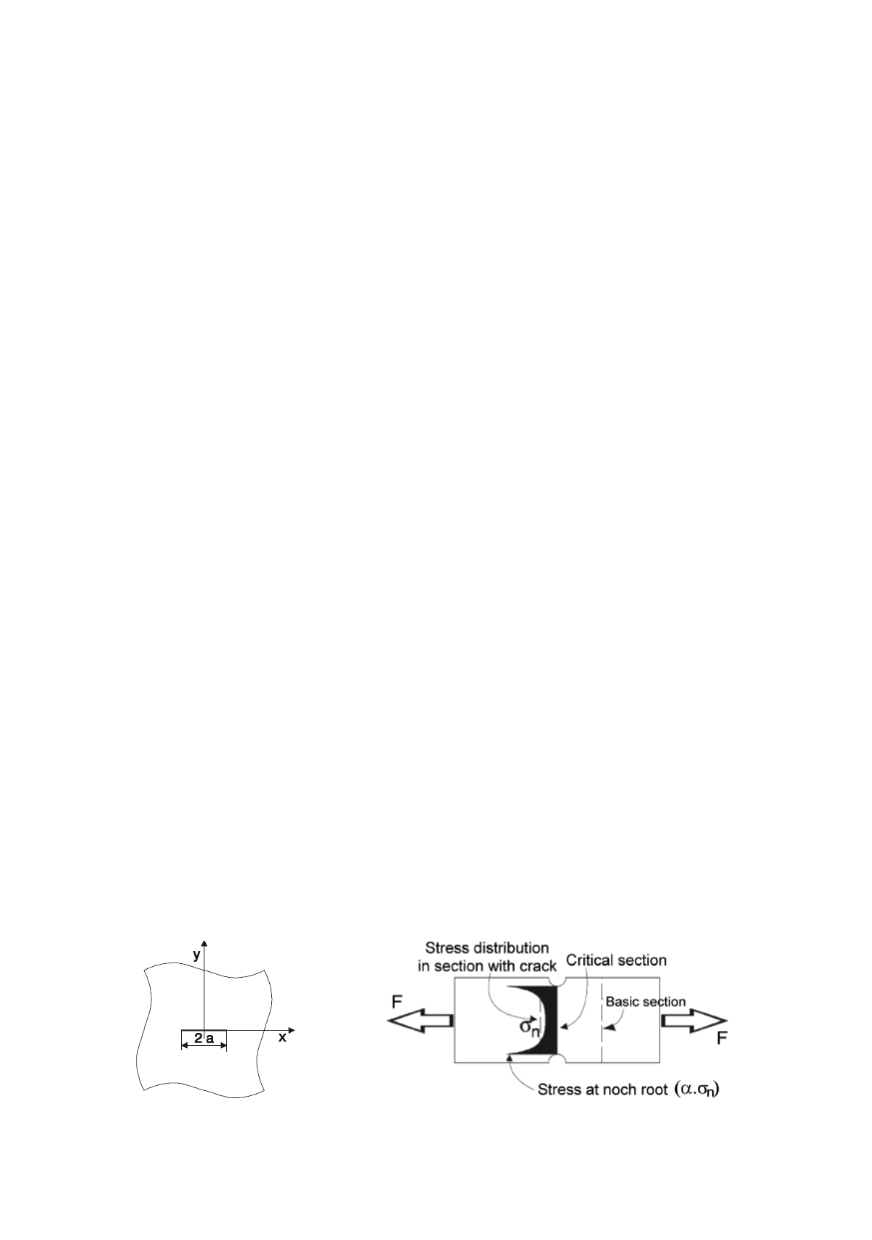

127
neglects finite geometry changes at the crack tip based on its blunting. The validity of the
solution is loosed already before the end of plastic zone. When the contribution of the
higher order terms in the series become significant, this isolated parameter is no more
sufficient for the more accurate evaluation of the stresses in the section, but also for the
assessment of the important effects based on constraint, like geometry parameters of the
cracked body (this means not only constraint due to the wall thickness). This led to the
so-called two parameters fracture mechanics, of which the most known are
T
for the
correction of
K
and
Q
for the correction of J-integral.
The dependence on the geometry in LEFM conditions emphasize the importance of
another aspect, not sufficiently respected up to now. Theoretical analysis of notch or
crack starts from the assumption of endless contour in the space (Fig. 1). Nominal stress
is evaluated independently of the crack effect.
In the reality the solid is always of limited size, and for the purpose of evaluation
under the real conditions different corrections are introduced, like that for plate width and
back wall. Unfortunately, this kind of correction is developed only for LEFM and is
inaccurate under the yielding conditions. The corresponding solutions are in general not
analytical, but based on finite element calculations or experiments. As already shown, at
very short distance from the crack tip the solutions based on
K
and
J
is no more valid and
significant differences appear here, depending on local geometry. In addition, signifi-
cance of the stress in the cross-section weakened by the crack is obvious having in mind
that for the evaluation of the collapse or pure plastic failure must be considered, although
the definition of the corresponding stress is often not simple and accurate.
Elastic-plastic fracture analyses such as given in the EFRI or R-6 methods assume net-
section yielding in the structure. According to the definition,
L
r
is the ratio of the applied
load to the load which produces plastic yielding of the cracked structure, so that the
weakening of the section by the crack must be considered.
However, in the calculation of the Fracture-Analysis-Diagram (FAD) it is usual to
take the ratio of equivalent applied stress to the material's yield or proof strength, and not
the section forces, so the smallest section is compelling. The solutions for
K
values are
standardized in the fracture mechanics, considering stress in the section without crack.
Similar problem is well known by the treatment of material fatigue (Fig. 2).
Under the condition of local plasticity the evaluation of maximal stresses and strains
due to the stress concentration caused by notch or hole in the plate is based on the stress,
reached in the section reduced by the hole or notch, calculated for a particular loading
with stress distribution across the section obtained for a uniform geometry. This is especi-
ally important when, for example, the mean stress effect has to be considered. Because of
this following question is reasonable: why the stress in critical section is not calculated
based on elastic-plastic fracture mechanics?
Figure 1: Crack theoretical model
Figure 2: Presentation of stress concentration effect


















